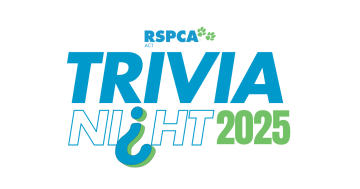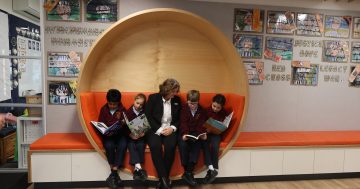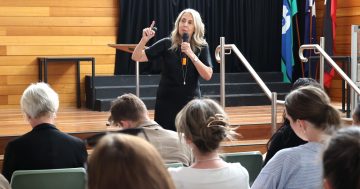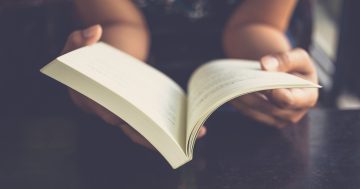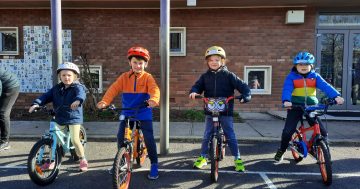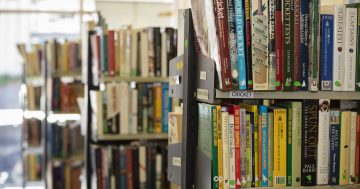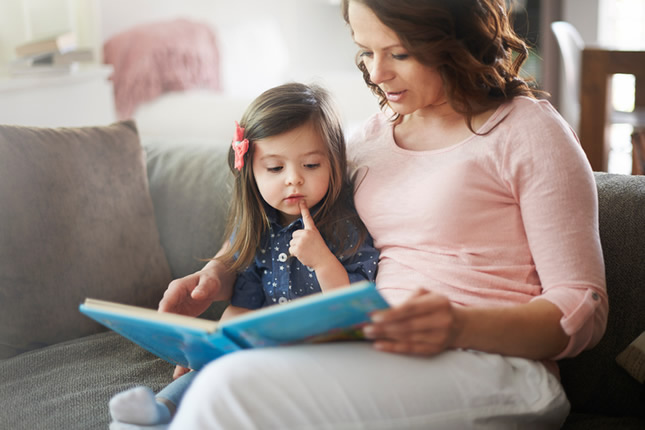
With the school year back in full swing, our little Canberran cherubs are settling into their new years and new classes, getting to know their lovely new teachers.
Personally I am a newbie to the school system – with my eldest just beginning Kindergarten this year. Having grown up in Sydney I absolutely love the ACT’s preschool system, which helped her get a taste for structured learning before heading into “big school”.
Last year her preschool teachers were surprised to find that she could already read. Word got around and before long I had a few parents asking for advice on how to help their children.
While I wish I could take all the credit for the techniques, I can’t. Most of the advice I got on how children learn to read actually came from my Mum – a primary school teacher of 33 years.
I gratefully soaked up all of the knowledge she would share, and over the years grouped it together with cues from my daughter on what was working and what wasn’t. It helped that I’m also a writer – but only so far as that I have strong beliefs about the impact of reading and writing on self-esteem and confidence at school (so it made me pretty persistent!).
I’d like to share everything I’ve learned as a simple 5 step process any parent can follow to help their child learn to read.
Whatever their age – 10 months or 10 years – it’s never too soon to begin.
1. Get the AaBbCcs down pat.
Flashcards are AWESOME. You can buy them almost anywhere, or make them yourself. But what you are after is a pack that has capital versions of the alphabet and the little letters (e.g.: A and a).
My daughter was chewing on the corners of them before she actually knew what they were, so I probably bought them a bit too early. But any age from about 15 months is pretty easy to make a fun game out of flashcards.
Do them as regularly as you can (i.e.: 2-3 times a week) until when you hold up a B or b, their response is, “B!!!!”
2. Now learn the sounds they make.
The A-Z song is less relevant than we think it is.
When my daughter could sing her ABCs at 22 months I was so proud I got her to ring Nanna and sing it over the phone. The first thing my Mum said was, “That’s great Rachel, but if she doesn’t learn the sounds the letters make, she’ll never be able to read.”
LOL. That was unexpected.
But I took her advice, and after my daughter had learned to identify all of the letters of the alphabet, I used the same flashcards to teach her the sounds they make.
I would hold up an ‘A’ or ‘a’ and say, “A goes…a” (with ‘a’ being the phonetic sound that A makes). We kept at this until she knew them all well.
If you’re not sure how to make the proper sounds from all the letters, there are some pretty cool YouTube videos on phonetics for kids.
3. Start with simple words.
Once they have their letters and sounds down pat, you can start teaching them how to join letters together to make words.
It’s best to start with words that are very short and sound exactly the way they are spelt. For example, you might cut up some coloured paper and write words like: at, cat, dog, yes, lot, mix, fun, hug, sat, and so on.
It took a fair few months for her to understand how the letters make actual words, so be patient and sound out the letters together (“c———–a———–t”) until they pick up on the word.
Once it “clicks”, they’re well on their way to reading just about anything.
4. Teach groupings.
I wouldn’t know the technical term for this, but after your child can read words that sound exactly as they are spelt, the next thing is to teach the sounds that standard 2-letter combinations make.
For this I made a new collection of flashcards that had – th, oo, ph, ee, ea, ow, ou, ch, sh, er and any others I could think of.
These were much less fun for her so I’d just do them randomly out of the blue every now and then until she knew them.
5. Use learning books to speed up the process.
I love buying the learning books for kids that have activities and teach them reading / number skills (ie: School Zone brand and my new favourite ABC Reading Eggs).
You can get them from just about anywhere and they really help to speed up the process. I credit ‘My First Sight Words’ from ABC Reading Eggs with advancing my daughter’s reading skills by at least 20% in a couple of months.
One page every few days (ie: before a bedtime story) or a couple of pages a week is all you need.
I also found the ‘Spot’ books by Eric Hill to be fantastic first readers.
And that’s it!
The only thing I’d add is that patience and praise are essential. Your kids know what is important to you by the reaction they get, and I’m pretty sure my neighbours could hear me squealing “Good girl!!!!!” for every correct answer she gave.
And every child learns in a different way. I’m not saying these steps will work for everyone, and I truly believe every child has areas that they find easier or more difficult than others. But if we, as parents, can help build their confidence by investing a little of our time to help them get along a little faster…well, that’s just time well spent!
Now over to you – did your child have an early love for reading? Do you have a special system that you’ve used to teach your child a new skill?











